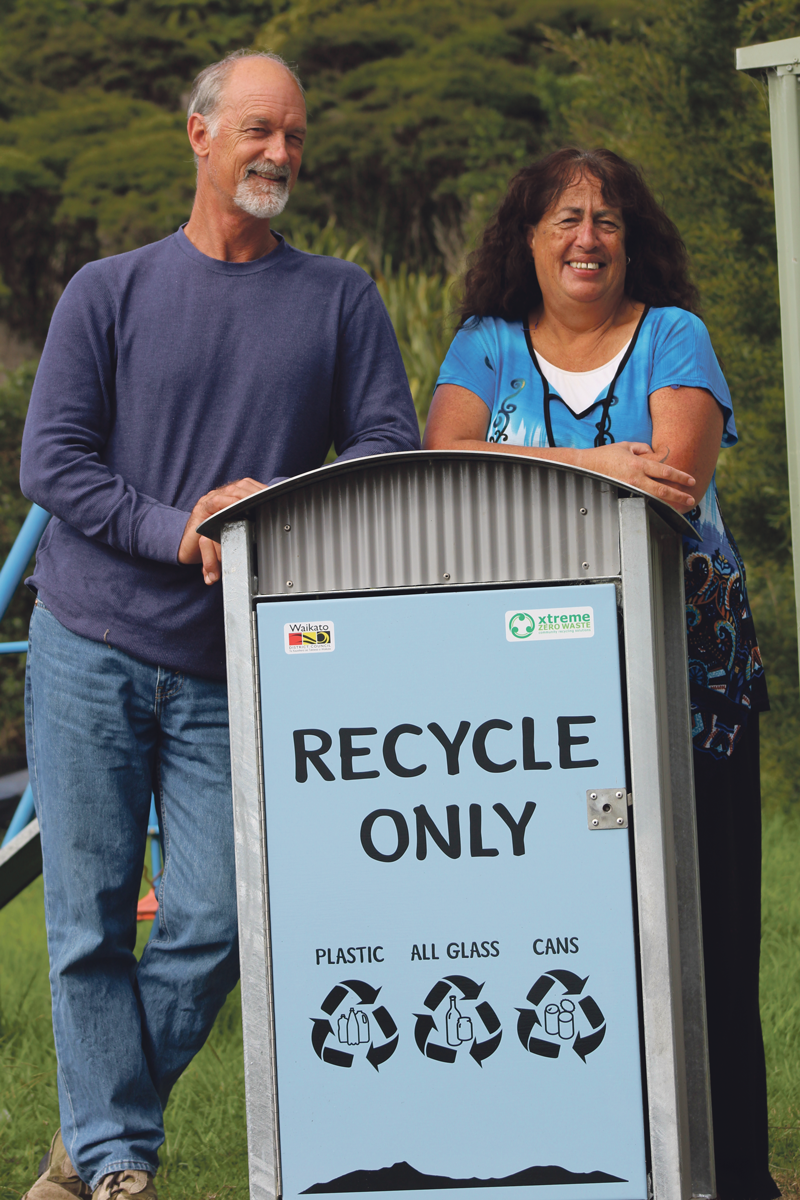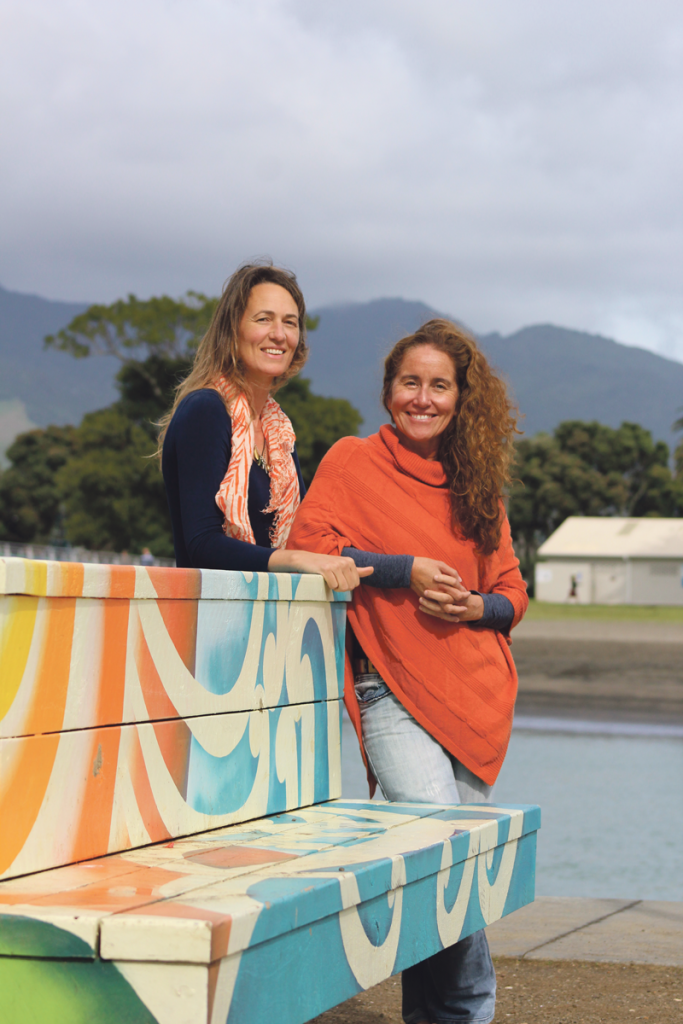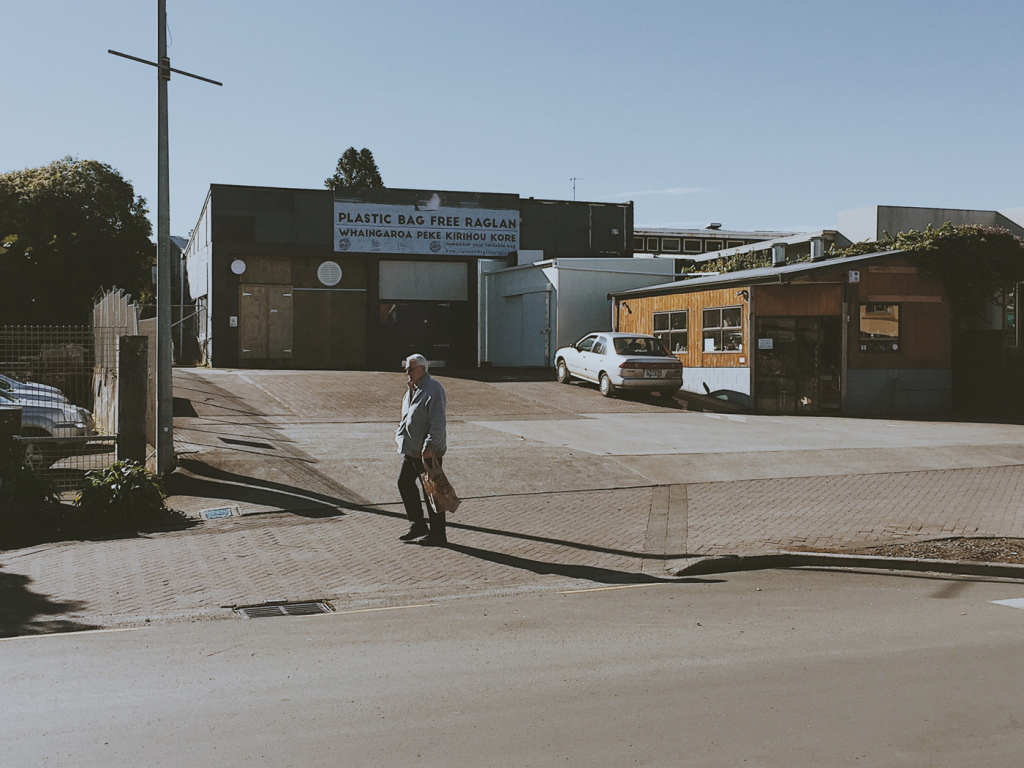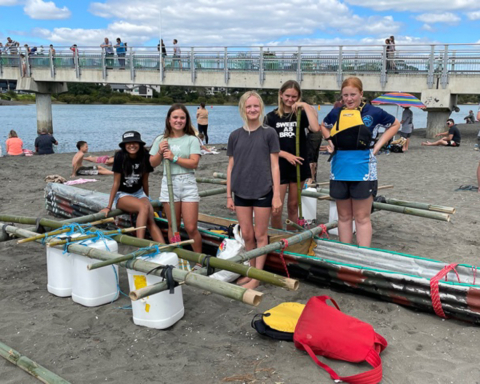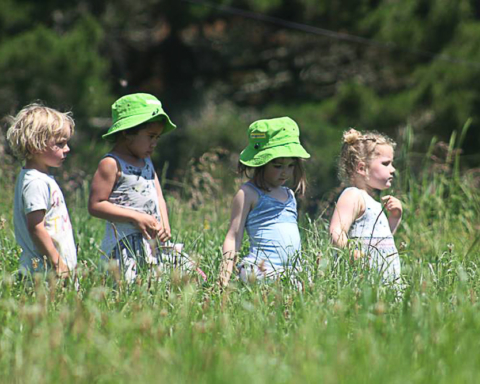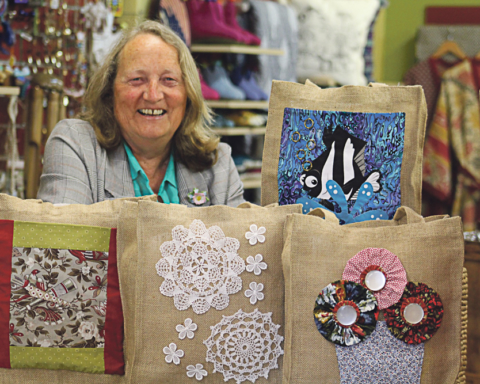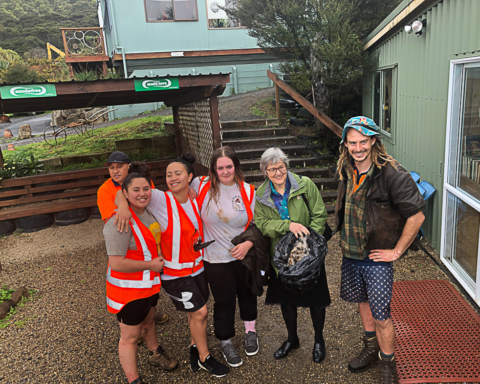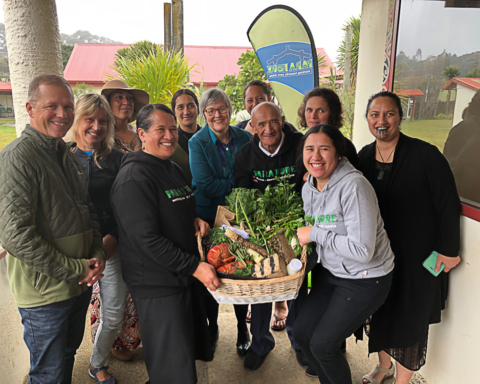It’s not easy being green, but the team at Xtreme Zero Waste are always devising ways to help divert the town’s waste from the landfill.
The surge in visitor numbers in the past few years has got the team coming up with solutions to the increased waste created during the holiday season.
At a glance this looks like 25,000 vehicles on State Highway 23 over summer, Te Kopua Holiday Park at capacity with up to 4000 campers, Raglan Surf Life Saving head counts on the weekends of around 4000 beachgoers and cell phone stats from Waikato District Council showing a population in excess of 20,000 people.
Add to this the new housing developments and the town’s infrastructure is at critical mass, Xtreme Zero Waste relationship manager and founding member Rick Thorpe says.
“I’ve been here for 30 years and seen lots of changes. During winter 20 years ago, shops couldn’t even stay open. Now they’ve gone from not enough trade to too much.”
Contracted to the WDC to handle the waste of all this human activity, XZW was bursting at the seams during the 2017/18 peak holiday period processing 550m3 more recyclables than in January 2017, including over 300m3 of cardboard – a commonly used measure of retail activity.
Street litter and recycle bins overflowing with the excess waste were emptied twice a day during the week and three times a day on weekends and public holidays, taking up to 11 hours a day and kerbside recyclable collections took up to 10 hours with an extra truck and staff.
Struggling under the weight of a community recycling up to 80 percent of its waste, Rick is recommending to WDC the number of kerbside collections are spread over three or four days and he says this will also future proof for current and future housing developments.
The increase in waste is also impacting on the drop off points at Te Mata and Te Uku and Rick says there are several solutions being considered by council, including increasing shipping containers from 20ft to 40ft and servicing them more often, and the possibility of kerbside collections in Te Mata, Te Uku and Waitetuna.
Rick and the team are mindful of keeping ahead of Raglan’s growth and a lot of work is being done behind the scenes to improve recycling in the future, such as container deposit systems, which offer refunds for recycled containers and have been shown to raise rates of recycling and reduce litter.
Always in the back of Rick’s mind is the circular economy model – minimising and ultimately eliminating waste and pollution, keeping products and materials in use and regenerating natural systems. This is already in action at XZW with food waste turned into compost and metal and wood created into upcycled items, with both being sold at the resource recovery centre.
With recycled plastics’ markets in China shutting their doors, Rick says they are even looking at purchasing their own plastic extrusion machinery to turn plastics into building products.
But the team at XZW are not about to rest on their laurels. They are constantly evolving and coming up with solutions to the waste problems they face on a daily basis.
Thwarted by bin manufacturers only interested in making a profit, XZW operations manager Cain Brodie went about designing seagull-proof bin lids and locks that would stand the test of time and marauding seagulls.
It also meant they could employ the services of Raglan Engineering and found they could do it cheaper by keeping it local.
“We want to get the best deal for our ratepayers and give business to locals,” Rick says.
Keen to see more initiative at a national level, Rick believes central government needs to play a role in managing tourists’ contributions to keeping New Zealand green.
“If I was visiting a country and had to pay a $10 tax and I was told it was for the upkeep of tracks in national parks or something else I would benefit from as a tourist, I would be happy to pay.”
Janine Jackson
